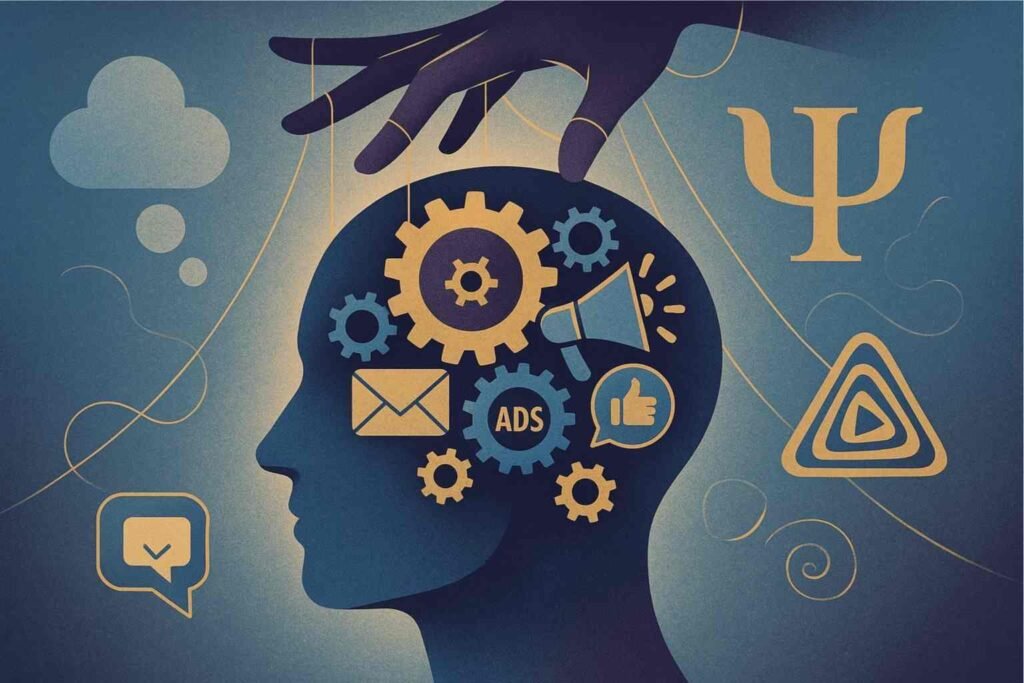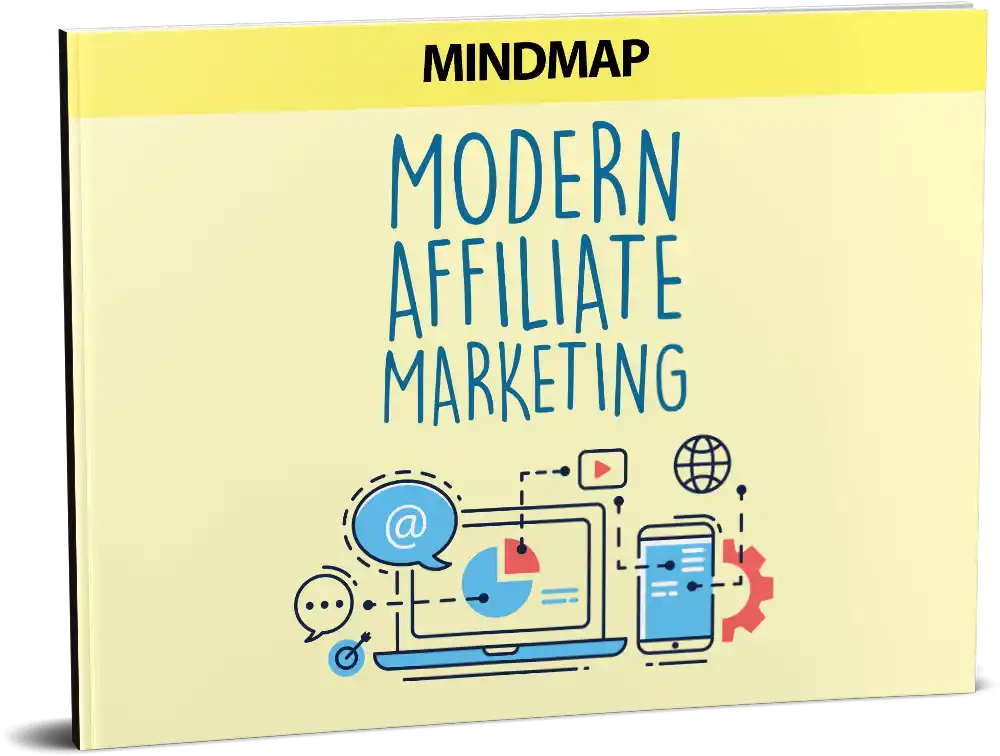
In the ever-evolving world of digital marketing, tactics and platforms may change, but one element remains constant: human psychology. Behind every click, purchase, and share lies a complex web of psychological principles that influence decision-making in ways most consumers never realize.
While many marketers focus exclusively on technical aspects like SEO algorithms, social media trends, or email deliverability rates, the most successful digital strategies harness the power of cognitive psychology to create deeper connections with audiences.
This comprehensive guide explores how understanding the human mind can transform your digital marketing efforts from merely functional to deeply persuasive, creating campaigns that resonate on a subconscious level and drive measurable results.
The Invisible Forces That Shape Consumer Decisions
Every day, consumers make thousands of decisions that feel rational and deliberate. Yet research consistently shows that up to 95% of purchasing decisions occur in the subconscious mind, driven by psychological triggers that operate below the threshold of awareness.
These hidden influences, known as cognitive biases, are hardwired into human psychology as mental shortcuts that help us navigate a complex world. For marketers, they represent powerful levers that can dramatically influence consumer behavior when applied ethically and strategically.
The Science Behind the Psychology
Cognitive biases aren’t random quirks of human behavior—they’re predictable patterns that evolved for good reasons. As marketing psychologist Darren Bridger explains, “Cognitive biases evolved as mental shortcuts to help our ancestors make quick decisions that were good enough to survive in a dangerous world.”
In the digital age, these same psychological mechanisms continue to operate, creating predictable patterns of behavior that skilled marketers can ethically leverage to create more compelling content, more persuasive landing pages, and more effective calls to action.
Let’s examine the most powerful cognitive biases in digital marketing and how you can apply them to transform your results:
Seven Cognitive Biases That Supercharge Digital Marketing
1. The Anchoring Effect: Setting the Price Psychology
The anchoring effect occurs when people rely too heavily on the first piece of information they encounter (the “anchor”) when making decisions. This bias is particularly powerful in pricing strategies.
How it works in digital marketing:
- Displaying the original price crossed out beside a sale price makes the discount appear more valuable
- Positioning premium options first to make mid-tier options seem more reasonable
- Using price anchoring in email subject lines to boost open rates
Strategic application: When launching an email campaign for a product priced at $97, you might use a subject line like “Worth $297, Today Just $97” to create a powerful anchor that makes the actual price feel like a substantial value.
2. Social Proof: The Power of the Crowd
Social proof leverages our tendency to look to others for guidance on how to behave, especially in uncertain situations. This bias explains why testimonials, reviews, and user counts are so effective in digital marketing.
How it works in digital marketing:
- Customer testimonials and case studies that showcase real results
- Review counts and star ratings prominently displayed
- User statistics that emphasize popularity (“Joined by over 50,000 professionals”)
Strategic application: According to marketing psychology research, the most effective testimonials combine specific numerical results with emotional benefits. Rather than generic praise, use testimonials that follow this formula: “I achieved [specific result] which made me feel [emotional benefit].”
3. Loss Aversion: The Fear of Missing Out
Humans are psychologically wired to feel the pain of losses more acutely than the pleasure of equivalent gains. Studies suggest that losses are psychologically about twice as powerful as gains, making this one of the most potent biases in marketing.
How it works in digital marketing:
- Limited-time offers that create urgency
- Emphasizing what customers will lose by not acting
- Free trial periods that leverage the endowment effect (once we possess something, we value it more)
Strategic application: Instead of merely highlighting benefits, frame your marketing around what customers stand to lose. Compare “Gain access to exclusive content” with “Don’t miss out on exclusive content.” The latter typically drives higher conversion rates.
🚨 Have you heard about Genius Wave? A simple 7-minute audio that can reprogram your brain to boost focus, productivity, and even attract more opportunities. Click here to see how it works. It’s not magic — it’s applied neuroscience. Give your potential a real chance!
4. The Framing Effect: Context Changes Everything
The framing effect reveals how the same information presented differently can lead to entirely different outcomes. Simply changing how options are described—without altering the options themselves—can dramatically influence decision-making.
How it works in digital marketing:
- Positioning products as solutions to problems versus enhancements
- Framing statistics positively (“97% satisfaction rate”) or negatively (“Only 3% dissatisfaction”)
- Structuring pricing pages to emphasize value rather than cost
Strategic application: When marketing health products, compare “This supplement is 90% effective” with “Only 10% of users saw no benefit.” Though mathematically equivalent, the first framing typically generates stronger positive responses.
5. The Bandwagon Effect: Everyone’s Doing It
The bandwagon effect taps into our natural tendency to adopt behaviors or attitudes that we perceive as popular or common. This bias explains why trends spread so rapidly in the digital world.
How it works in digital marketing:
- Highlighting subscriber or customer numbers
- Showcasing logos of well-known clients
- Emphasizing trending or popular products
Strategic application: In email marketing, include lines like “Join over 50,000 smart marketers who receive our weekly insights” to leverage the bandwagon effect and boost subscription rates.
6. Cognitive Ease: The Power of Simplicity
Cognitive ease refers to how easily our brains process information. When information is simple to process, we’re more likely to find it believable, likable, and trustworthy.
How it works in digital marketing:
- Clean, uncluttered website design
- Simple, jargon-free copywriting
- Consistent branding that becomes familiar over time
Strategic application: A/B testing consistently shows that simplifying landing pages—removing unnecessary options, streamlining copy, and creating a clear visual hierarchy—significantly improves conversion rates, sometimes by 20% or more.
7. The Reciprocity Principle: The Psychology of Giving
Reciprocity is the social norm that compels us to repay others when they do something for us. This deeply ingrained principle creates a sense of obligation that can be a powerful marketing tool when used ethically.
How it works in digital marketing:
- Free content that provides genuine value
- Unexpected bonuses with purchases
- Personalized recommendations or assistance
Strategic application: Rather than immediately asking visitors to subscribe to your newsletter, offer a valuable free download first. Studies show this approach can increase conversion rates by up to 30% compared to asking for the subscription directly.
The Ethics of Psychological Marketing
While understanding these psychological principles gives marketers powerful tools for influence, they come with significant ethical responsibilities. The most successful brands use these techniques to enhance user experience and help customers make better decisions, not to manipulate or deceive.
The Thin Line Between Persuasion and Manipulation
The key difference between ethical persuasion and manipulation lies in transparency, intent, and customer benefit:
- Ethical persuasion helps customers understand the value of products that genuinely meet their needs
- Manipulation uses psychological triggers to push customers toward decisions that don’t serve their best interests
As marketing psychologist Nick Kolenda puts it, “Psychological techniques should amplify a product’s existing value, not create an illusion of value where none exists.”
Building Trust Through Ethical Psychological Marketing
Rather than short-term manipulation, focus on using psychological insights to create marketing that builds long-term trust:
- Be transparent about how your products work and what customers can expect
- Prioritize customer benefit in how you frame and position offerings
- Use psychology to clarify value, not obscure limitations
- Test with actual users to ensure your marketing helps them make better decisions
This ethical approach not only builds more sustainable businesses but also creates more effective marketing. In the digital age, manipulative tactics quickly lead to damaged reputations and lost trust.
🚨 Have you heard about Genius Wave? A simple 7-minute audio that can reprogram your brain to boost focus, productivity, and even attract more opportunities. Click here to see how it works. It’s not magic — it’s applied neuroscience. Give your potential a real chance!
Applying Psychological Principles Across Digital Channels
Understanding these cognitive biases is just the beginning. The real power comes from systematically applying these insights across your entire digital marketing ecosystem.
Website Psychology: Designing for Persuasion
Your website is often the central hub of your digital marketing efforts and a prime opportunity to apply psychological principles:
Psychological Navigation Design:
- Place your most important CTAs in the right-hand portion of pages (where eye-tracking studies show attention naturally flows)
- Use directional cues like arrows or eyelines that point toward key elements
- Create visual hierarchies that guide visitors through a psychological journey
Persuasive Product Pages:
- Lead with benefits that address emotional needs before listing technical features
- Use the “Problem-Agitate-Solve” framework to create emotional resonance
- Incorporate multiple forms of social proof, from reviews to usage statistics
Psychologically Optimized Checkout:
- Minimize distractions that trigger decision paralysis
- Use progress indicators to leverage the goal-gradient effect (we accelerate our efforts as we approach a finish line)
- Place security badges prominently to address loss aversion concerns around payment security
Email Marketing: Psychological Triggers for Higher Engagement
Email remains one of the most effective digital marketing channels, and psychological principles can dramatically improve results:
Subject Line Psychology:
- Use the curiosity gap theory to create intrigue without being clickbait
- Leverage the Zeigarnik effect by highlighting incomplete information that creates tension
- Test question-based subject lines that activate problem-solving instincts
Email Content Structure:
- Begin with personalized elements that trigger the cocktail party effect (our attention is drawn to personally relevant information)
- Use the serial position effect by placing key information at the beginning and end of emails
- Create pattern interrupts with unexpected formatting or content to maintain attention
Psychological Call-to-Action Optimization:
- Frame CTAs around specific desired outcomes rather than actions (“Secure Your Spot” vs. “Click Here”)
- Use the endowed progress effect by showing recipients they’ve already begun a process
- Create exclusivity through limited availability to trigger loss aversion
Social Media: Crafting Psychologically Compelling Content
Social platforms offer unique opportunities to leverage psychological principles for greater engagement and sharing:
Content That Triggers Emotion:
- Target high-arousal emotions like awe, amusement, and anxiety, which research shows drive higher sharing rates
- Use contrast principles to create surprising or counterintuitive content that captures attention
- Create content that aligns with followers’ identity to leverage consistency bias
Psychological Engagement Tactics:
- Ask questions that activate the Zeigarnik effect (our need to resolve open loops)
- Use the pratfall effect by occasionally showing vulnerability or imperfection
- Leverage the peak-end rule by creating strong openings and memorable closings
Psychological Timing Strategies:
- Schedule content during psychological prime times when target audiences are in specific mindsets
- Create content series that leverage the commitment and consistency principle
- Use the spacing effect by strategically repeating key messages at increasing intervals
Measuring the Psychological Impact of Your Marketing
While understanding psychological principles is valuable, the true test of their effectiveness lies in measurement. By establishing the right metrics, you can quantify the impact of psychological optimization on your digital marketing results.
Key Performance Indicators for Psychological Marketing
Engagement Depth Metrics:
- Time spent on page (indicates cognitive involvement)
- Scroll depth (shows continued interest)
- Return visit rate (demonstrates memorable impact)
Psychological Conversion Indicators:
- Micro-conversion completion rates (small commitments leading to larger ones)
- Form abandonment patterns (reveal psychological friction points)
- Post-purchase satisfaction ratings (indicate alignment between expectations and reality)
Long-Term Psychological Impact:
- Brand recall in unprompted surveys
- Customer lifetime value growth over time
- Referral rates (indicating strong psychological connection)
A/B Testing Psychological Elements
To truly understand which psychological approaches resonate with your specific audience, implement systematic A/B testing:
- Isolate single psychological variables (test one bias application at a time)
- Use meaningful sample sizes for statistical significance
- Measure both immediate and delayed effects (some psychological impacts emerge over time)
- Test across different audience segments (psychological responses often vary by demographic)
By continuously testing and refining your psychological approach, you can develop a data-driven understanding of which principles generate the strongest results for your unique brand and audience.
🚨 Have you heard about Genius Wave? A simple 7-minute audio that can reprogram your brain to boost focus, productivity, and even attract more opportunities. Click here to see how it works. It’s not magic — it’s applied neuroscience. Give your potential a real chance!
The Future of Psychological Marketing
As digital marketing continues to evolve, psychological principles will remain fundamental to effective strategy. However, several emerging trends are reshaping how these principles are applied:
Personalization at Scale
Advances in AI and data analytics are enabling unprecedented levels of personalization, allowing marketers to tailor psychological approaches to individual preferences and behaviors:
- Dynamic content that adapts to user psychology in real-time
- Predictive analytics that anticipate psychological needs
- Personalized psychological journeys across multiple touchpoints
Ethical AI and Psychological Marketing
As AI plays a larger role in marketing, ensuring ethical application of psychological principles becomes increasingly important:
- Transparent algorithms that explain how recommendations are generated
- User control over how their psychological data is used
- Regulatory frameworks that protect consumers from manipulative practices
The Neuroscience Revolution
Emerging neuroscience research is providing deeper insights into the biological basis of consumer decision-making:
- More precise understanding of which brain regions activate during different marketing exposures
- Better correlation between neurological responses and long-term purchasing behavior
- New frameworks for measuring subconscious responses to marketing stimuli
Conclusion: The Psychological Advantage
In a digital landscape where technical tactics are increasingly commoditized, psychological insight represents the new competitive advantage. While your competitors focus on surface-level metrics and temporary tactical advantages, a deeper understanding of human psychology allows you to create marketing that resonates on a fundamental level.
The most successful digital marketers of the next decade won’t simply be those with the largest budgets or the most advanced technology—they’ll be those who most deeply understand and ethically apply the principles of human psychology to create meaningful connections with their audiences.
By systematically incorporating these psychological principles into your digital marketing strategy, you can create campaigns that don’t just capture attention momentarily but create lasting impressions that drive sustainable business growth.
The question isn’t whether psychology influences your marketing results—it’s whether you’re strategically harnessing that influence or leaving it to chance.
🚨 Have you heard about Genius Wave? A simple 7-minute audio that can reprogram your brain to boost focus, productivity, and even attract more opportunities. Click here to see how it works. It’s not magic — it’s applied neuroscience. Give your potential a real chance!



